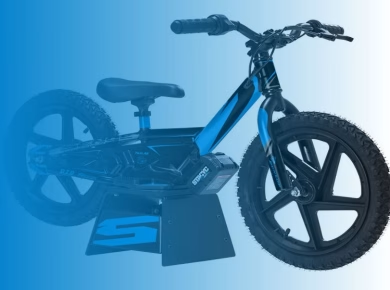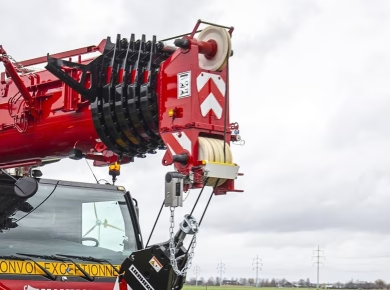When it comes to precision repairs in automotive and machinery applications, having the right tools is paramount. One tool that stands out in its importance is the bushing removal tool. This specialized tool is designed to simplify the often tedious and challenging process of removing bushings from various components, ensuring that repairs can be made with accuracy and efficiency. In this guide, we will explore the ins and outs of using a bushing removal tool, the types available, and practical tips for achieving the best results.
Understanding Bushings and Their Role
Bushings are critical components found in numerous mechanical systems, serving as a protective lining for holes or shafts, reducing friction between moving parts. They are made from various materials, including rubber, plastic, and metal, and their primary function is to facilitate smooth movement and absorb shocks. Over time, bushings can wear out or become damaged due to repeated stress and environmental factors. This deterioration can lead to increased friction, noise, and ultimately, component failure if not addressed promptly.
Recognizing when to replace bushings is essential. Signs such as unusual noises, vibrations, or even a noticeable decrease in performance can indicate that your bushings are failing. When it comes time to replace them, a bushing removal tool becomes an invaluable asset.
Types of Bushing Removal Tools
Before diving into the practical steps of using a bushing removal tool, it’s helpful to understand the different types available on the market. Each type serves a unique purpose and may be better suited for specific applications.
1. Hydraulic Bushing Removal Tool
Hydraulic bushing removal tools utilize hydraulic power to remove bushings efficiently. They are particularly useful for stubborn bushings that resist removal through traditional means. The hydraulic force applied can help dislodge even the most embedded bushings, making this tool a favorite among professionals.
2. Manual Bushing Removal Tool
For those who prefer a more hands-on approach, manual bushing removal tools are a viable option. These tools typically consist of a set of pullers and attachments that allow for controlled removal of bushings using manual force. While they may require more effort, they can be a cost-effective solution for DIY enthusiasts.
3. Specialty Bushing Removal Kits
Some manufacturers offer comprehensive kits that include a variety of tools and attachments designed for removing bushings from specific applications. These kits can save time and provide everything needed for a successful bushing replacement.
How to Use a Bushing Removal Tool
Now that we have a foundational understanding of bushing removal tools, let’s delve into the practical steps involved in using one effectively. While the exact steps may vary depending on the specific tool and application, the following guidelines can serve as a general framework.
Step 1: Gather Your Tools and Materials
Before you begin, ensure you have all necessary tools and materials on hand. Besides your bushing removal tool, you may need a hammer, a socket set, and possibly some lubricant to ease the removal process. Having everything ready will minimize disruptions and keep your workflow smooth.
Step 2: Assess the Situation
Before applying any force, take a moment to assess the bushing you need to remove. Check for signs of damage or corrosion that might affect the removal process. Understanding the condition of the bushing will help you choose the best approach and avoid any unnecessary complications.
Step 3: Prepare the Area
Clear the area around the bushing, ensuring that you have ample space to work. This will help you maneuver the removal tool effectively and avoid any accidents. If necessary, use a penetrating oil to help loosen any rust or debris that may hinder the removal process.
Step 4: Position the Bushing Removal Tool
Carefully position the bushing removal tool according to the manufacturer’s instructions. If you’re using a hydraulic tool, make sure to secure it properly, as you will be applying significant force. For manual tools, ensure that the pullers are aligned with the bushing and that everything is snug but not overly tight.
Step 5: Apply Force Gradually
When ready, begin applying force to the tool gradually. If using a hydraulic tool, monitor the pressure closely. If you’re working with a manual tool, use steady, even pressure. Avoid sudden jerks or excessive force, as this can lead to damage either to the bushing or the surrounding components.
Step 6: Remove the Bushing
Once you feel the bushing start to loosen, continue applying pressure until it is fully removed. If it becomes stuck, pause and reassess. Sometimes, a few taps with a hammer can help dislodge a stubborn bushing without causing damage.
Step 7: Clean the Area
After successfully removing the bushing, take the time to clean the area thoroughly. Remove any debris, old lubricant, or remnants of the bushing. This will ensure that the new bushing fits properly and functions well once installed.
Common Challenges and Solutions
Using a bushing removal tool can be straightforward, but it’s not without its challenges. Here are a few common issues you might encounter, along with practical solutions.
Stuck Bushings
Stuck bushings can be incredibly frustrating. If a bushing refuses to budge, consider applying more penetrating oil and allowing it to sit for a while before attempting removal again. Sometimes, heating the area with a heat gun can expand the metal and make removal easier.
Misalignment
Misalignment of the removal tool can lead to ineffective force application. Always double-check the positioning of your tool before applying pressure. A well-aligned tool will reduce the risk of damaging surrounding components.
Damage to Surrounding Components
When applying force, it’s crucial to be mindful of the surrounding components. If there is a risk of damage, using protective padding or taking extra precautions may be necessary. Always prioritize careful application of force.
Maintaining Your Bushing Removal Tool
To ensure longevity and optimal performance, regular maintenance of your bushing removal tool is essential. After each use, clean the tool thoroughly to remove any debris or lubricant. Check for signs of wear or damage, and store it in a dry, cool place to prevent rusting. A well-maintained tool will serve you well for many projects to come.
Conclusion
In summary, a bushing removal tool is an invaluable asset for anyone involved in precision repairs, whether in automotive work or machinery maintenance. Understanding the types of tools available, knowing how to use them effectively, and being aware of common challenges can significantly improve your repair experience. By following the steps outlined in this guide and taking the time to maintain your equipment, you can streamline the bushing replacement process, ensuring that your repairs are executed with precision and care. Always remember that having the right tools and knowledge can make all the difference in achieving successful outcomes in your repair endeavors.


